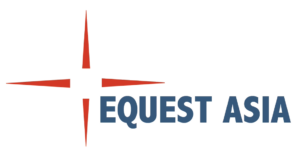Is Multi-Tasking Really All That Effective? Look Again.
There was a time when multi-tasking was the big buzzword among management circles. It was a sort of a magic word that became a popular strategic component for higher productivity and efficiency. And it did seem, for quite a while, like doing multiple things at the same time, particularly for a lot of busy people, would make one more productive and end up with better, more positive results. What The Studies Say Contrary to this wide-spread misconception, several studies have shown that in most cases, multi-tasking impacts negatively on productivity and efficiency programs of both top management and executives. Here’s how it works. When you focus on more than one specific task at a time and you have to switch back and forth between these two or more tasks, this can in the end leave you less focused and less efficient. In other words, multi-tasking … when you’re focusing on many activities in a short time frame, moving from one task to the other, you are really creating a need for your brain to refocus. This can eat up your time and energy. What this actually boils down to, is … it takes longer to finish this cluster of tasks than it would if you had focused on each one individually. Learning More About Multi-Tasking Relative To Our Brain Having touched on multi-tasking’s contradictory findings from recent surveys, it doesn’t altogether mean that multi-tasking doesn’t work. It does. Multi-tasking works when you put together an activity or a task requiring concentration and focus with one that is principally physical and can be done almost automatically. This becomes possible because you can place most of your focus on one activity and have the other get done secondarily. There’s no need for you to keep shifting a sharp focus from one task to the other. An example of this would be listening to a Frank Sinatra CD while doing your workouts, or, having some casual chit-chat about that new couple next door who look like illicit lovers, while doing your house vacuuming. When Multi-Tasking Doesn’t Work. This animal doesn’t work and can be a vicious killer of focus and energy when you put together two or more tasks that require real conscious thought. For instance, you can’t be talking about saving on the power bills while doing your college thesis, or going about studying neuroscience while watching American Ninja Warrior. If you pretty much see yourself in these kinds of situations, walk away. Take a break. You don’t have to give it up entirely, but there are a few good alternatives. Get Into Single Tasking. One task at a time. It’ll save you time. As much as possible, develop this habit. If you sometimes find your back against the wall and have to cram 1001 activities into the same time and space, prioritize. Choose the most important task for the moment and focus fully on it, then work out a plan for when you can do the rest before clearing them from your mind. Chunking. It’s about time management. The whole idea is to set aside “a chunk of time” to focus on one particular task, minimizing interruptions and grouping similar tasks together like checking all your email in one sweep rather than going through them the whole day. Simply, this allows you to focus on these activities when you’ve got that “chunk of time” and eliminates the extra time you need to refocus when you’re shifting from one task to the other. So, multi-tasking? Think again.
Is Multi-Tasking Really All That Effective? Look Again. Read More »



